Cooke’n With Gas
Marcus E. Cooke Memorial Park, Wallingford
March 2023
You never know what you’re going to get with trails in Wallingford. Sometimes you’ll expect a lovely graded path through pristine woods and end up being turned back by an overgrown trail through invasive junk. Other times you’ll wonder how the town maintains a trail there and wind up enjoying an hour over fun scrambles and decent views.
Ah, the mysteries of Wally World.
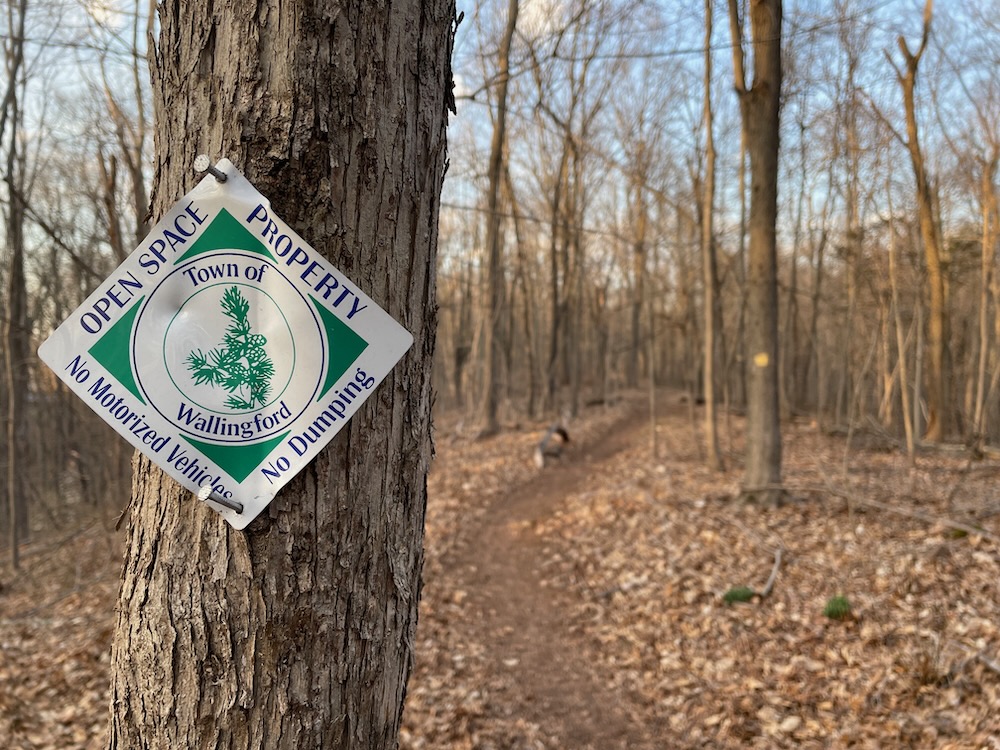
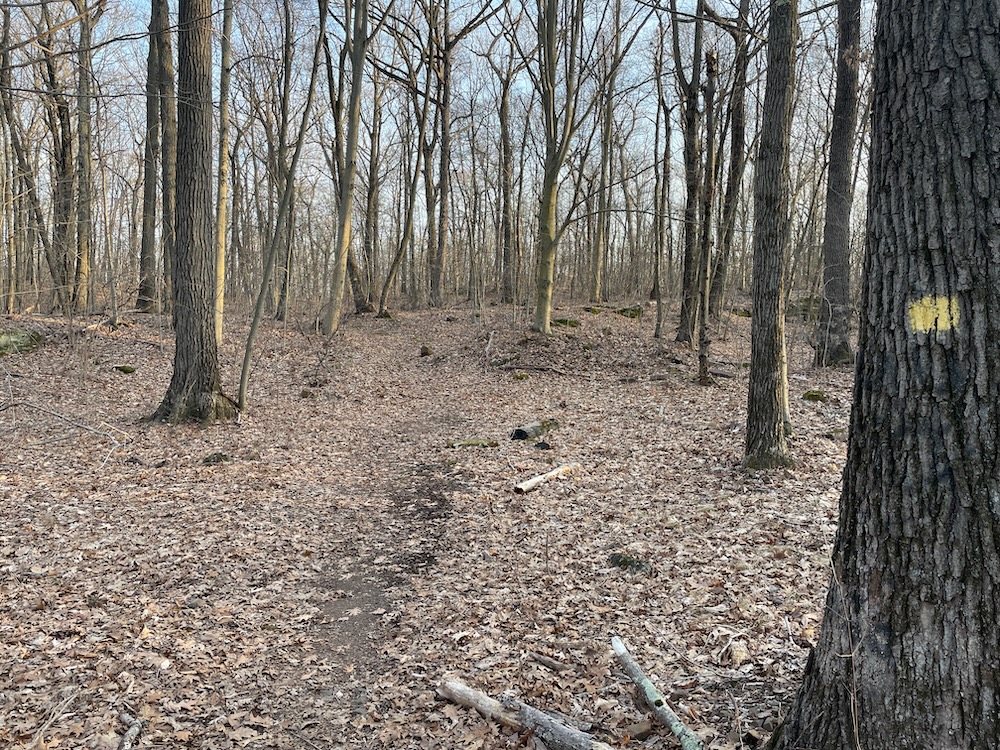
I had some time and some daylight so it was off to Marcus E. Cooke Memorial Park I went, with vague rumors of a trail.
Little did I know that trails have existed here since the early 1950’s. Blazed trails. Well-maintained trails. Fairly nice trails!
After parking in the lot, I started to read the sign giving me the history of this park. It is a long an detailed explanation of its founding. I’m going to guess that very, very few people read the whole thing – and now that I’ve hiked the whole place, I’m going to say that the sign omits what I wanted to know the most: what was this place like before I-91 was built?
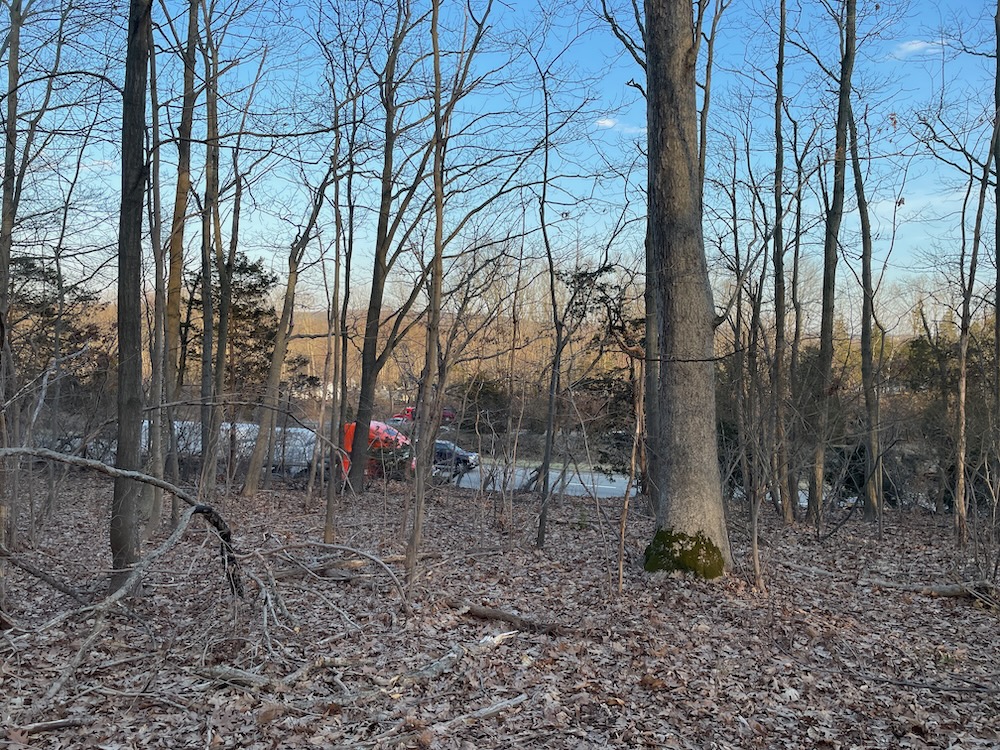
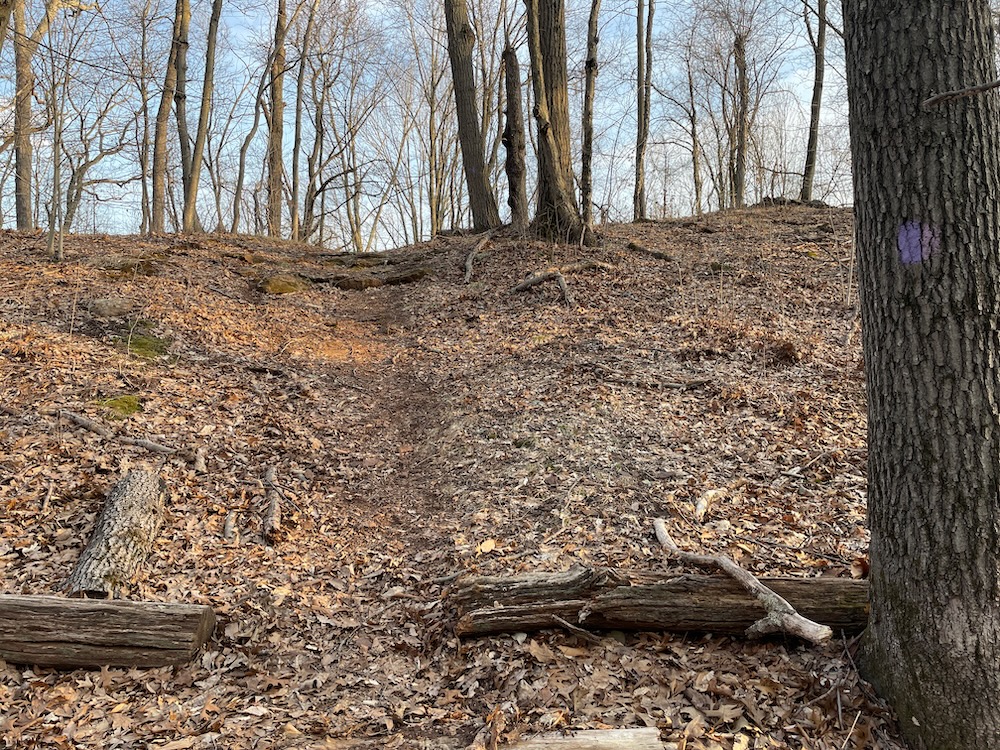
The park was conceived by the Wallingford Grange in early 1952 as part of a national Grange service effort. It was initially a tiny pocket park, but Chester Cooke ultimately donated a much larger chunk of his land in memory of his father, Marcus.
The Grange men built firepits and picnic tables and cleared trails. They wound up winning 6th prize in the National Grange Whatever It Was Outdoor Service Project Contest and that was pretty much that. The land was given to the town in the 1960’s and various service organizations have helped maintain it ever since. Most recently, I believe, the local Girl Scout Troop has done thing like create the historical sign with all of this information.

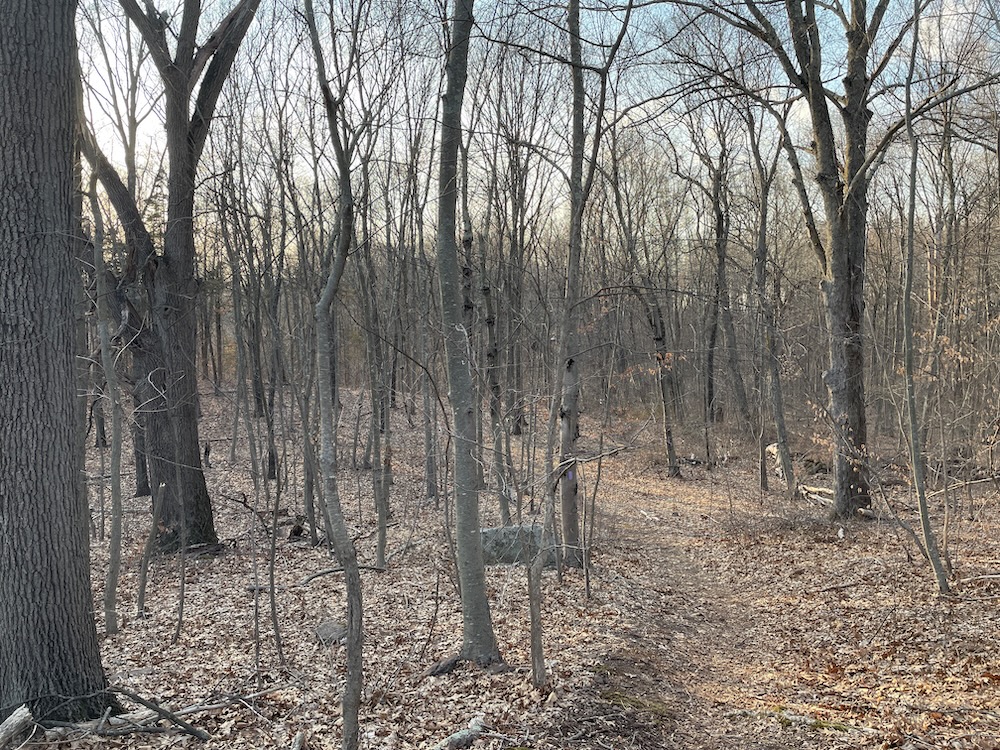
There are options to hike here, but ultimately you will do a loop, or a series of loops. I chose to hike the largest loop clockwise, taking me to the far reaches of the park. This meant hiking the yellow trail with two purple polyp-like loops off of it.
It also meant walking very near Interstate 91… not once, not twice, but three times. No, not, like, dangerously close. But certainly close enough to throw a snowball at cars. (I don’t know why I used that measurement. Don’t ever throw snowballs at cars going 80 mph.)
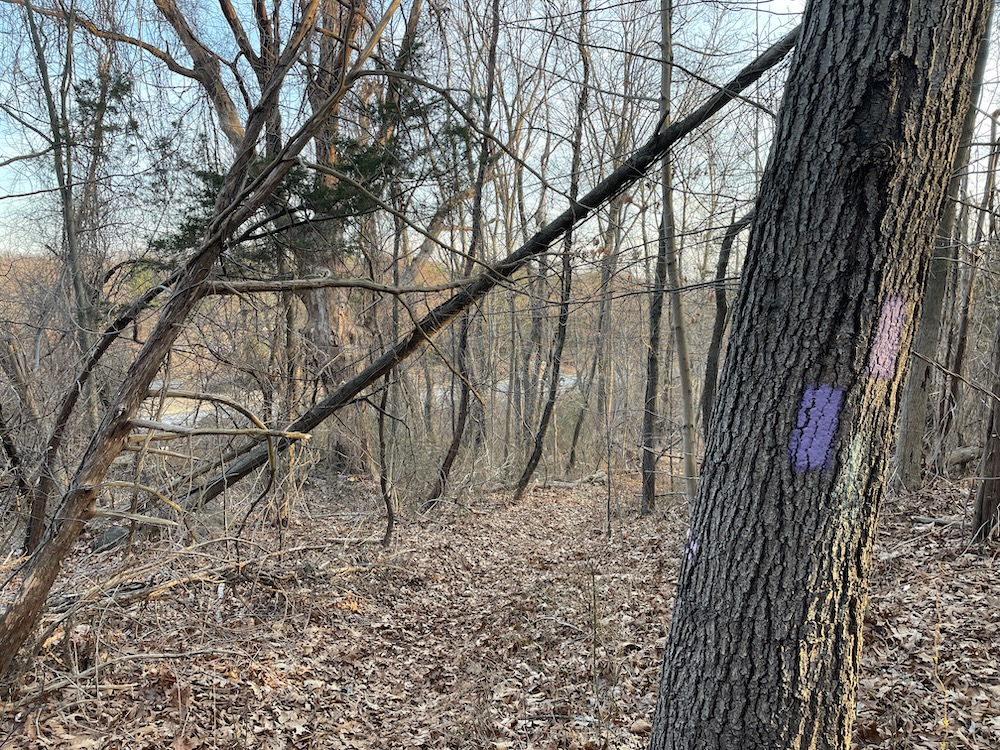
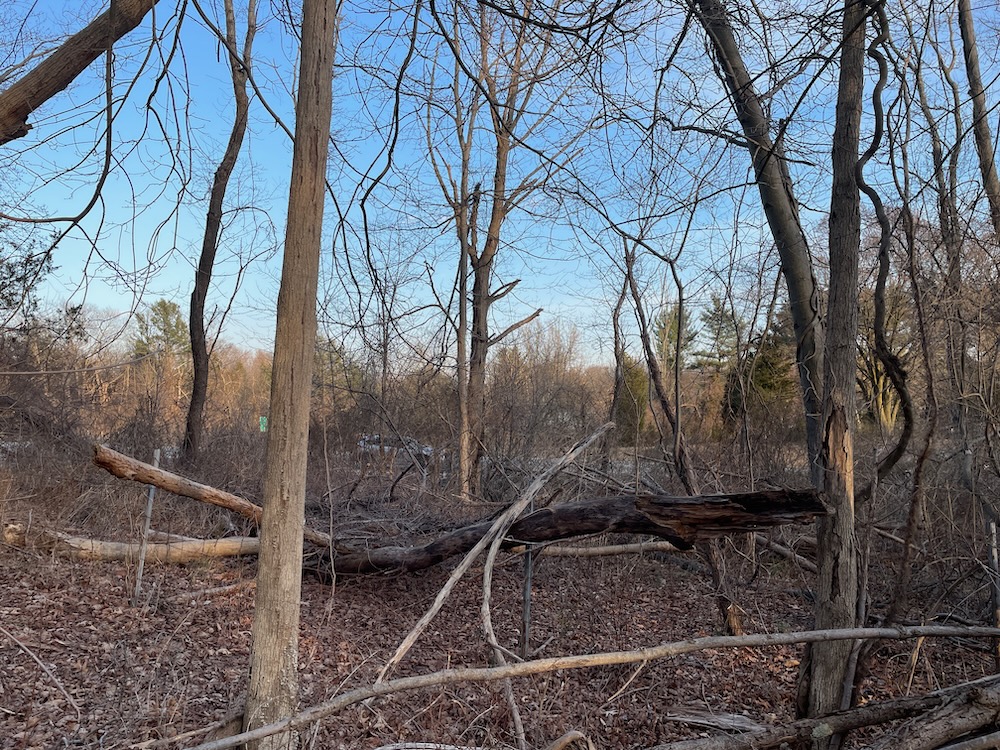
This section of 91 was completed in 1966, so I’m guessing that it wasn’t even an idea when Chester Cooke donated his land to the Grange. I’m curious if the trails used to extend a bit more to the east originally. Yes, I’m talking 70 years ago… so I guess I’m not really all that curious.
In addition to the highway, my most memorable takeaway from this place is how well-maintained it was in very early spring 2023. It is clear that this is a challenge in some places here, but goshdarnit, someone has put in some effort. As ever, I appreciate that effort.
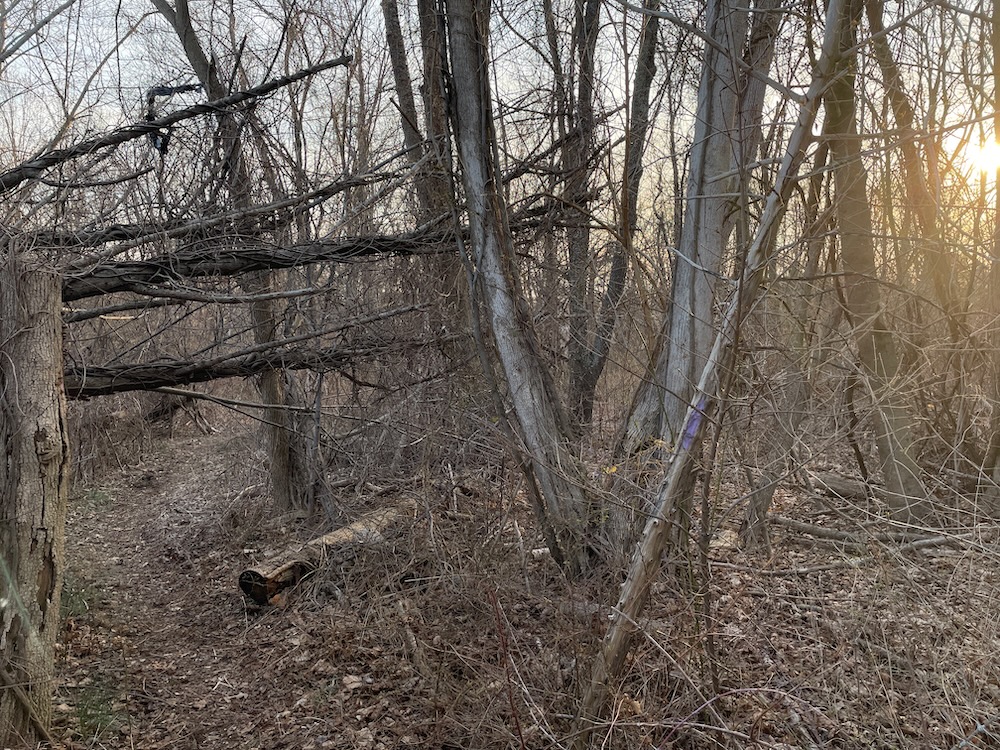
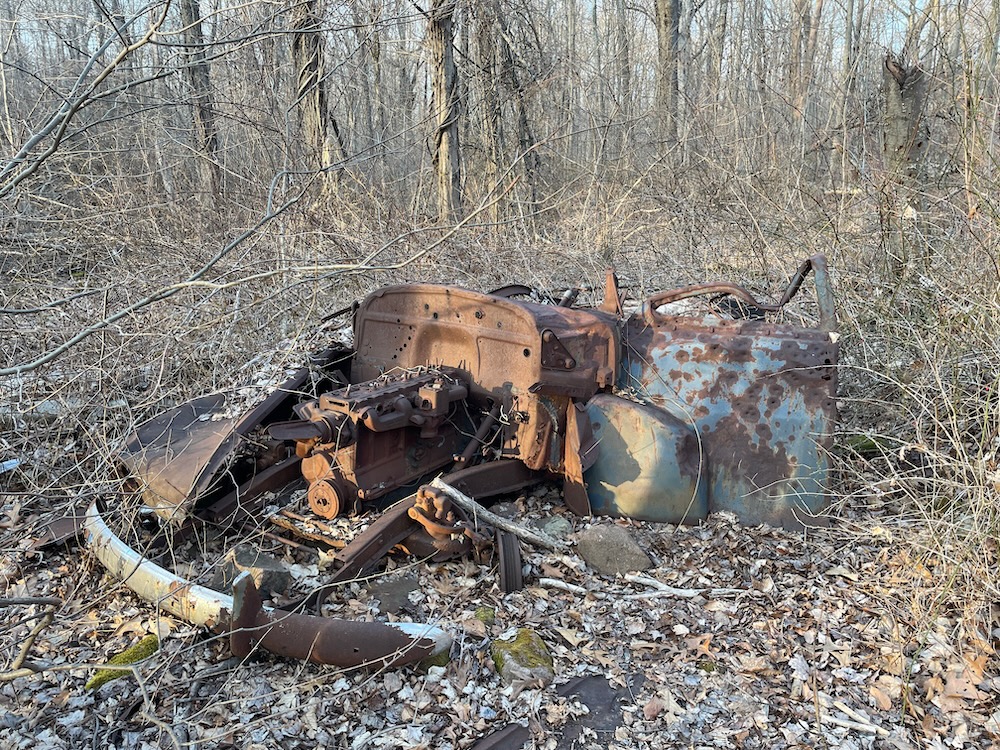
I also appreciate the map at the parking lot which shows things like a firepit at a trail intersection (symbolized by a flame) and a car along a trail (symbolized by a… um… car.)
Yes, there is an old car here that has probably been here since the 1950’s when this land became public land.
At least one of the red-blazed cut-off trails on the map no longer exists, but everything else seemed in order. There are a couple short and steep ups and downs, but nothing that will wreck you. Some of the topography seems artificial; perhaps earth that was moved to build the interstate. At one point on my return to my car I walked along what was surely noise buffering berm, shielding some house from the highway.
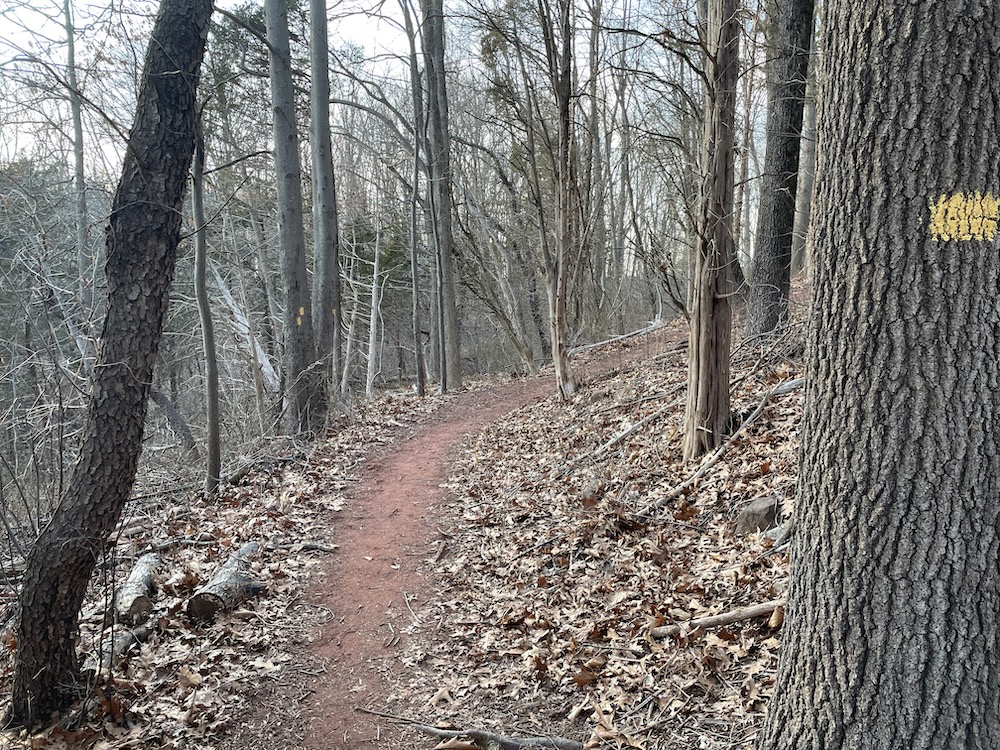
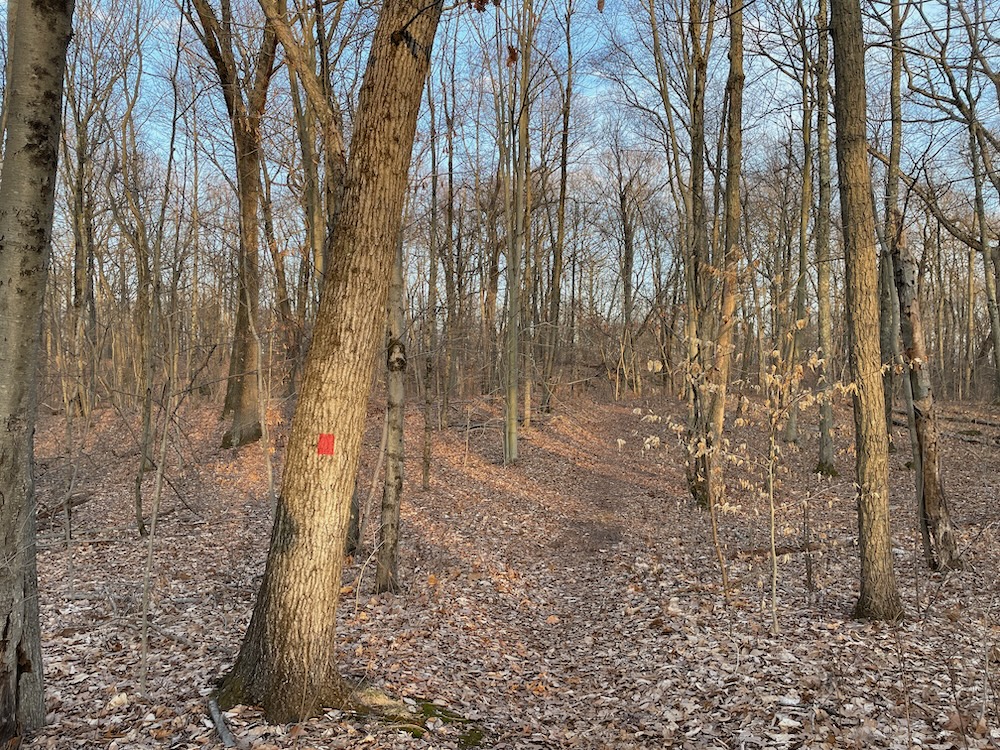
All in all, Marcus E. Cooke Park was a pleasant surprise. I had no expectations when I arrived and came away thinking this would be a nice little spot for the kids from the nearby school to picnic and take a walk in the woods.
Well done Mr. Cooke and the old Wallingford Grange… and the Girl Scouts and the trail maintainer(s). Well done.
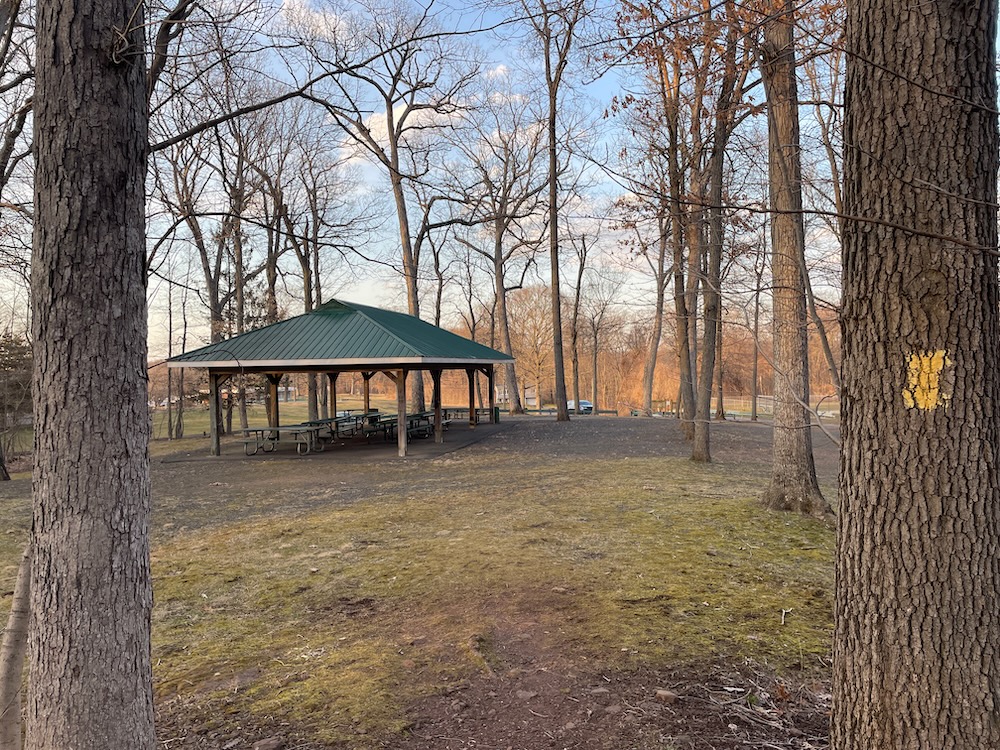
![]()

 Bill Kunze says
Bill Kunze says
February 5, 2024 at 11:17 pmBetween 1951-59 i lived in the West View Hills neighborhood. The town ran a terriffic summer day program in the park. They provided an acivites attendant, always a college age young woman. The were numerous board and table games as well as baseball and softball in the field bordering Old Rock Hill Road. The yougest kids enjoyed the swings, slide and a hand pushed merry go round. One Easter they had an Easter egg hunt in the woodland closet to the pavilion. Our family would regularly have a cookout in the pavilion’s shady shelter on Summer Sundays. All of these are truly treasured memories. Here is an essay I crafted about the park. Enjoy. Old Stone Walls Covered with Time
Blazes notched into the trees then painted yellow mark the leaf obscured trail through the woods of my favorite park located in the town where my family lived when I was a young boy. The blazes weren’t really needed. I knew the path as if it were one which I used daily. Marcus Cooke Park was bequeathed in 1952 to the town of Wallingford, Connecticut “for recreation and the study of nature” by descendants of Marcus E. Cooke (1849-1908) an esteemed civic leader, orchardist and agricultural equipment businessman. Cooke’s recently renovated mid-19th century historical residence, itself a testament to longevity, still stands on East Main Street. The present owners, employing vision and restraint, have used the restoration to amplify the dwelling’s original virtues, achieving splendid results.
In the 1950’s the Cooke farm was a maintenance and repair operation for all manner of large implements. We neighborhood boys used to pester the repairmen with all sorts of questions as to what kind of work each piece of machinery performed. Curious kids wandering amongst large machinery, what could possibly go wrong? The most intriguing and impressive implements were the very large orchard spraying machines. When powered to full throttle, they would disappear into a roaring mist. Kids love noise and chaos.
After WWII, some of the surrounding rural farmland gradually became populated with new single-family homes. On 15 August 1951, Mom and Dad moved their household including three boys into a modest 1 ½ story Cape Cod. The new home featured all-metal “Youngstown” metal kitchen cabinets and the latest appliances. Mom was over the moon with joy. We now could have our own vegetable garden.
Orchards, or their remnants, were all around us. My friends and I enjoyed apples from some of the very trees Cooke had extensively planted. We were unaware of their heritage. To us, they were just picked aromatically crisp apples to be enjoyed on a riot of fall color afternoon.
Unlike massive maple and oak, apple trees, with their sturdy low scaffold branches, were considerably easier to climb. If these lower branches were large enough, you could recline on one and look at a tree’s canopy and the sky, a simple pleasure revealed. We also loved collecting horse chestnuts from the great tree (Aesculus hippocastanum) in the front yard of the Cooke farm’s homestead. The prickly husk surrounding the nut made its’ extraction a delicate challenge. Not knowing how to properly roast chestnuts for eating, we instead bored slim holes in their center and strung them on a length of cord to make “conkers”. When wound up and twirled, they made an interesting humming sound. Alternatively, you could fling them at a convenient target. Sometimes this meant each other. It was self-made fun in its purest form.
Thankfully, Marcus Cooke Park’s expanses have been largely left in an undeveloped state. There is a new ballpark and a simple playground. An ancient picnic shelter, likely a renovation of the original that was constructed at the park’s inception, remains intact. Our family loved to go there on summer Sundays for a picnic. We kept the soft drinks, iced tea, hamburgers, wieners and salads in a now classic red metal Coca-Cola ice chest; cool in more ways than one. The huge field stone fireplace that once stood beneath one end of the shelter has been dismantled. The modest play area’s hand push merry go round is also history. Using it for too long could occasionally generate a protein spill. Alternatively, you could just roll down a hill. Kids love being dizzy. We liked to speed up the high slide by vigorously rubbing the metal chute with waxed paper. With friction levels reduced, unsuspecting kids would fly down it much faster than they had anticipated. Sometimes this was accompanied by a rough landing. Applied science and fun collide.
Summer days spent in the park were huge fun. In the 1950’s, the town provided funding for the position of an activity’s attendant. Games and crafts were featured with a full range of engaging pursuits. “Caroms” a sort of pool like table game played with wooden rings on a board with netted pockets, was a personal and perennial favorite, one of which I never seemed to tire. The baseball diamond out near the park’s entrance on Old Rock Hill Road had a curious feature. A sizable area of the left field corner ran noticeably upslope. This made for some adventuresome fielding.
The forest which comprises most of the park is Carolinian Broad-leaf, that wondrous mix of Oak, Beech, Maple, Hickory, Sycamore, Fir and Hemlock with deciduous genus the dominant form. It is fun to try and ‘read’ the trees; to decipher their identity through branch display, leaf shapes or bark textures; to try and guess the ages of those trees that are great and venerable.
The park’s facilities are, in some few places, gently worn and in need of replacement or repair. Others speak of renewal. A nicely constructed new sign, a pleasant perennial garden and bench are now situated near the park’s entrance. A modern ballpark with backstop, bleachers and dugouts is well designed and maintained. On the whole it remains now, as then, a place of quietude, one where the spirit can seek and find refuge, even from a distance as I now reside on the Pacific Northwest coast of the continent. Not to paint a less than honest picture, a swath of the nearby former farmland and orchards less than a mile away is now Interstate 91, a major transportation route up into southern New England. Traffic sounds may occasionally intrude, but even that does not fundamentally alter the nature of this humble but beautiful place. This summer I had the pleasure of introducing some of these joys to the youngest generation of our family. Several miles away to the northwest are expansive views of the Metacomet Ridge. Known locally as the Hanging Hills, they are the heavily forested geological descendants of incredibly ancient volcanic basalt ‘trap rock’.
It was not easy trying to locate the exact location of the old ‘cow pond’, likely a mere low area in the woods, now grown in with the latest succession of trees. When the weather turned sufficiently cold, we would skate over the black-bottomed ice which had leaves frozen into its depths. The occasional protruding rock or branch did little to diminish our fun. Well-established houses and a church now occupy the old cornfield that marked the western boundary of Marcus Cooke Park. In autumn, corn stalks from the previous summer’s crop were actually gathered into vertical bundles.
We would pick ripened tasty apples, the air redolent with the aroma of renewal masquerading as decay. The curious thing is, at that age, we are rarely aware of how special those days really are. With ease I found the rock outcroppings in the forest exactly where they had been fixed in the treasure chest that is memory. Overhanging ledges became not so secret hiding places or fortresses. Were they used by the Native American Indian populations as they followed their own trails that crisscrossed the region? Did Indian spirits watch our movement from behind trees?
Following the leaf covered trail in a southerly direction eventually leads to an old low wall of piled field stones. It was common in the early-18th to late-19th centuries, for neighboring land owner farmers to construct dry stacked stone walls, a mutual project that would mark the borders of their respective properties. News and commentary of the day were passed along among people who might not have frequent contact with one another. The shared values of my fellow native New Englanders, those of practicality, forthrightness, a helpful nature and respect for hard work and honest effort are a living endowment. Not surprisingly, a sizable number of these walls still remain; some of which may actually constitute functional boundaries. Save some of the venerable trees that surround them, many are older than any living thing. How have they managed to survive the decades and, in some instances, the centuries? The parade of historical events, the passing into memory and then into history of those who constructed them, the ceaseless weathering and storms have barely left their mark. In some instances, the imposed orderliness was transitory. What might have been a cleared stony pasture or field in the long receding past is now a forest with a leaf disguised piled dry-stone wall curiously running straight through its randomness.
Sometimes a stone will dislodge from its long-held place. A delicate balance, maintained for so long, is lost. Perhaps the freezing thawing cycle has exerted an immeasurably small influence. Gravity has manifested its presence. For all the increase in the surrounding population, likely not a soul will witness or hear this event. Discovering changes in the formerly familiar or reflecting on the impermanent nature of our human creations does not unsettle my spirit. That, which endures however, fills me with admiration and wonder.
 Bill Kunze says
Bill Kunze says
February 6, 2024 at 3:36 pmI meant to mention that I have some very colorful photos of the park taken in mid October, the peak of fall foliage. I could send some along as attacments if you would like. Cheers!